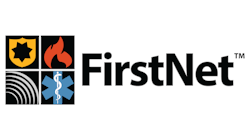When you mention the numbers 9-1-1, people immediately think of quickly reporting an emergency or of the response system that’s involved. The term itself has entered our vocabulary as a synonym for speed.
If you ask the same people to describe where they believe that their 9-1-1 call is answered, some would envision talking directly to those who would come to their aid, and others would see the 9-1-1 center for what it typically is—a room that’s filled with consoles and staff who are assembled for the sole purpose of managing crises. Either way, chances are their description would include a centralized public building where this activity takes place. Up until now, this would have been correct. However, maybe, this concept needs to change. Maybe it’s time to embrace virtual 9-1-1.
Business as usual?
Well before the coronavirus crisis, we witnessed a number of industries institute work-from-home opportunities. How many times per week do we call a technical support number and speak to someone who is in a remote office? Chances are, it’s quite a few. That said, technology is such that we don’t typically even notice. Could a similar transparency apply to fire dispatch, particularly during public health emergencies?
One of the prime strategies of infectious disease reduction is social distancing. To this end, nonessential businesses and activities are shut down or are restricted, and those that remain open take precautions to limit person-to-person contact. For 9-1-1, this means many things. Administrative staff is sent home, gloves and masks are worn and cleanliness takes on new importance. Visitors are banned, and the temperature of employees is taken when they arrive for work. With the onset of coronavirus, agencies that could do it brought backup facilities online to effectively split staffs, but not everybody had that option. That meant that for many of the 6,100 U.S. dispatch centers, it was business as usual, so to speak. All too often, this means working in rather close quarters.
As the pandemic worsened, it took its toll. In some areas, there was criticism of the time that was required to react. For example, news reports cited Sgt. Anthony Marciano, who is the director of the Federation of Public Employees union at the Broward Sheriff’s Office in Broward County, FL: “We were imploring them that they need to isolate people who had direct contact with [employees who tested positive for coronavirus]. They choose to bring these people back to work and not let them isolate and go get tested.” Enabling staff to work from home would have reduced significantly this exposure.
In addition to its obvious usefulness during pandemics, everyday emergency incidents are where virtual 9-1-1 can shine. Telecommunicators can log in immediately when they are needed most—during the first few minutes of developing emergencies. There is no prep or travel time. Personnel essentially can take calls at their kitchen table while wearing their pajamas. Although the image might be comical, the results aren’t. Staffing can be augmented almost instantaneously instead of an hour or two after the fact.
When I was a fire chief, my neighboring districts provided an arsenal of 17 engines, 5 rescues, 2 mini-pumper/brush units, 2 quints, 2 tractor-drawn aerials and a tower ladder. The most distant of these apparatus was housed 5.4 miles away. I could summon them simply by picking up a microphone. However, when I needed help as a 9-1-1 director, things were a lot different. When facing an emergency, I might round up a couple of administrative personnel who once worked the floor or chase one or two dispatchers out of the breakroom, but for the next hour or so, that was it. Sure, I could call in off-duty personnel, but finding them and getting them en route took time. Even some who were willing to respond might have child-care or other issues that would delay their departure. If we were hit by a weather event—the type of incident for which we really needed help right away—placing personnel on the road also potentially placed them in danger. Whether it was a tornado or a snowstorm didn’t matter. Furthermore, travel conditions severely slowed their arrival to the center. During that period of time, the event exponentially escalated, with increased inbound calls and outbound responses.
None of this is to suggest that this concept should represent the exclusive means of delivering 9-1-1. There are security measures and amenities that only a purpose-built emergency communications center can provide, and off-loading calls to neighboring agencies still remains a valid tactic. There also is something to be gained from working in proximity to your team. I’ve seen life-saving information shared almost accidentally on many occasions, when a telecommunicator overheard a critical conversation of their co-worker and garnered facts that applied to his/her own call.
Hurdles
There obviously are technical issues to address. Connection back to the emergency communications center might require a virtual private network, or VPN, over high-speed internet. Unfortunately, in rural areas, service might be spotty, but these areas would benefit the most from the capability to quickly engage employees.
Most homes don’t have backup generators, and loss of electric power is a common occurrence during weather events. Laptop batteries effectively can be augmented by personal uninterruptible power supplies, but neither lasts forever.
Even computers themselves offer challenges. Can and should public software be installed on personal laptops, or should everyone be issued a take-home device? What are the legal issues? Will the U.S. Department of Justice, for example, allow access to criminal databases from the dining room? Although such inquiries routinely are run remotely, these queries typically come from law enforcement devices under law enforcement control. However, as more industries adopt nontraditional solutions, we increasingly are asked to provide sensitive information over the phone to people who aren’t confined to a conventional office or who work in a call center that’s located somewhere overseas.
One of the biggest hurdles to remotely answering 9-1-1 has been connectivity to the radio network. Even when rollover calls are routed to another agency, the sticking point has been how to dispatch the proper authorities. Imagine receiving a report of a house fire with entrapment two counties away and not having the ability to send help? With the advent of Radio over Internet Protocol, or RoIP, and FirstNet, the problem of how to dispatch the proper authorities is reduced greatly because of the network design. Additionally, some agencies, such as that in Johnston County, NC, have worked with their vendor to allow remote control of their conventional radio sites. With this roadblock removed, the rest of the issues can be worked out.
After experiencing the tornado in “The Wizard of Oz,” Dorothy observed, “There’s no place like home.” Whether responding to similar local disasters or in the midst of an international pandemic, home also might be the most effective place for telecommunicators. Virtual 9-1-1: The time is now.

Barry Furey
BARRY FUREY, who is a Firehouse Contributing Editor, provides consulting and training services in emergency communications. He is the former director of the Raleigh-Wake Emergency Communications Center in North Carolina. During his 50-year public safety career, he has managed 9-1-1 centers and served as a volunteer fire officer in three other states. In 2005, Furey received a life membership in the Association of Public-Safety Communications Officials (APCO) International for his continued work in emergency communications. Furey was inducted into the Firehouse Hall of Fame in 2017.







